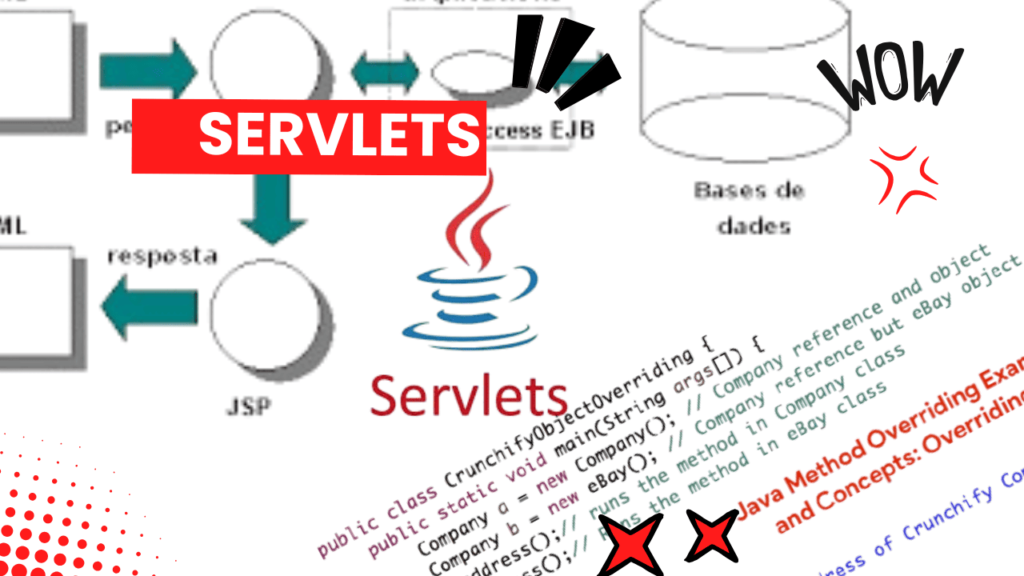Introduction

Why Study Servlets Topic?
Java Servlets are crucial for building dynamic, data-driven web applications. Understanding Servlets is essential for web developers as they enable interaction between users and applications on the web. With Servlets, you’ll learn how web servers process requests, manage sessions, and serve dynamic content—skills highly valuable in web development careers.
What Will Be Covered?
We will covers the basics of Java Servlets, including their role, life cycle, and use in web applications. We’ll explore request and response handling, session management, and practical coding examples.
Explanations & Example
Java Servlets are server-side programs that extend the functionality of web servers by handling requests and generating responses. When a client makes a request, the server passes it to the servlet. The servlet processes the request, typically accessing data from a database, and returns a response.
import javax.servlet.*;
import javax.servlet.http.*;
import java.io.IOException;
public class HelloWorldServlet extends HttpServlet {
protected void doGet(HttpServletRequest request, HttpServletResponse response) throws IOException {
response.setContentType("text/html");
response.getWriter().println("<h1>Hello, World!</h1>");
}
}
Code Explanation
- The code imports the required classes:
javax.servlet.*,javax.servlet.http.*, andjava.io.IOException. - The
HelloWorldServletclass extendsHttpServletto handle HTTP requests. - The servlet overrides the
doGetmethod to handle HTTP GET requests. - The code sets the content type of the response to HTML using
response.setContentType("text/html"). - The code writes an HTML message
<h1>Hello, World!</h1>to the response usingresponse.getWriter().println().
Summary
we covered the purpose of Java Servlets, the Servlet lifecycle, and a basic example of handling an HTTP request. Servlets are fundamental for any developer looking to create interactive web applications.
Learning Outcomes
After studying Servlets, learners will:
- Understand the role of Servlets in web applications.
- Be able to write a basic servlet for handling HTTP requests.
- Know how to manage sessions and create dynamic content.
Common Interview Questions
1.Describe the Servlet lifecycle?[ACCENTURE]
The Servlet lifecycle includes initialization, request handling, and destruction phases, managed by methods init(), service(), and destroy().
2.What is a Java Servlet, and why is it used?[TCS]
A Java Servlet is a server-side program that extends the capabilities of web servers. It handles HTTP requests and generates responses, enabling dynamic content creation on the web.
3.Explain the difference between doGet() and doPost() methods in a servlet.[WIPRO]
doGet() is used to handle HTTP GET requests, typically used for fetching data. doPost() is used to handle HTTP POST requests, typically for sending data to the server (e.g., form submissions).
4.What is the role of the web.xml file in a Java web application?[COGNIZANT]
The web.xml file, also known as the deployment descriptor, configures servlets, servlet mappings, and other application settings such as welcome files and session timeouts.
Practice Exercises
- Exercise 1: Write a servlet that responds with a personalized greeting based on a user’s name passed as a request parameter.
- Exercise 2: Create a servlet that displays a list of items dynamically fetched from a database.
Additional Resources
- Books: “Head First Servlets and JSP” for a deep dive into servlets and JSP.
- Tutorials: Oracle’s official Java EE documentation.
- Tools: Use Apache Tomcat to practice deploying and testing your servlets.
Take Quiz:
Question
Your answer:
Correct answer:
Your Answers
